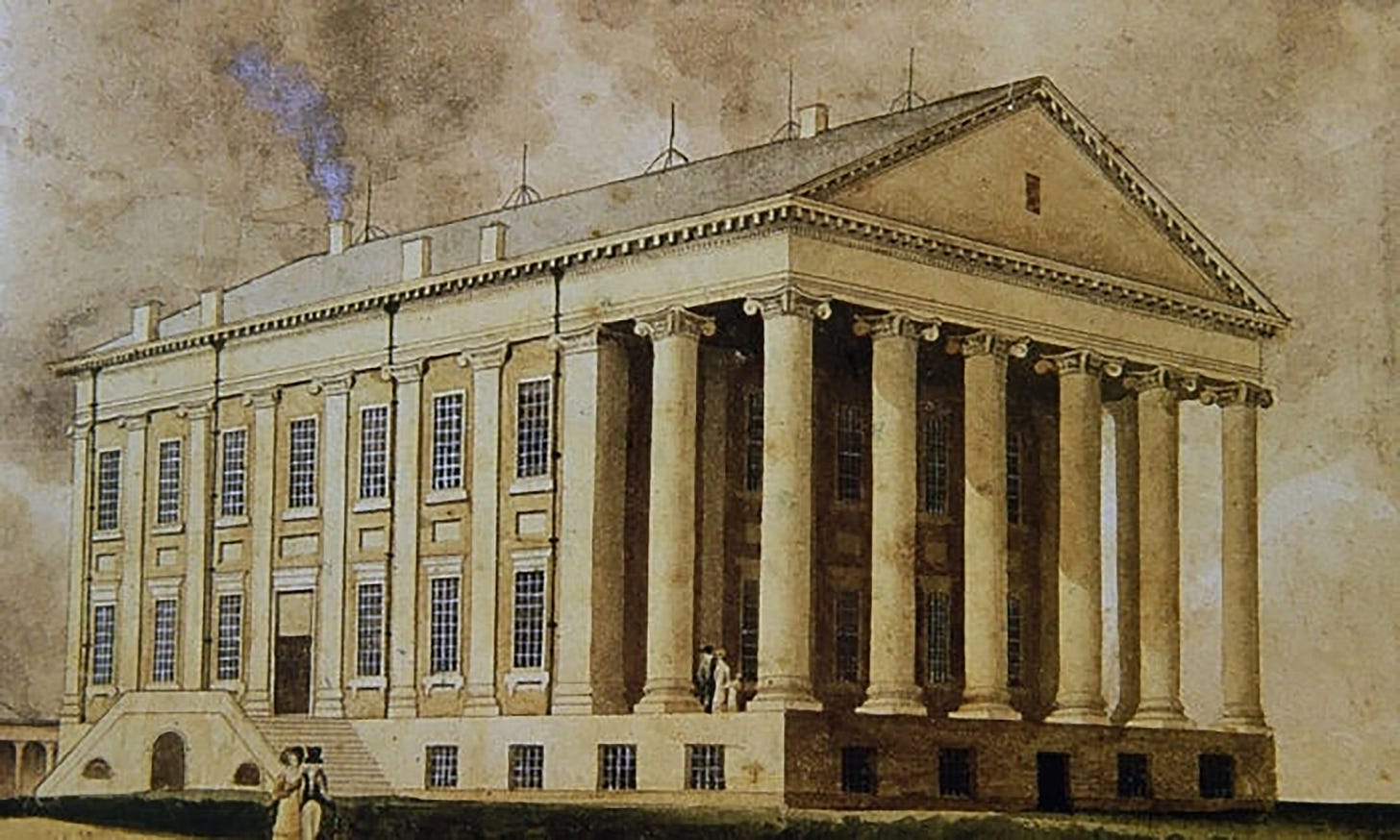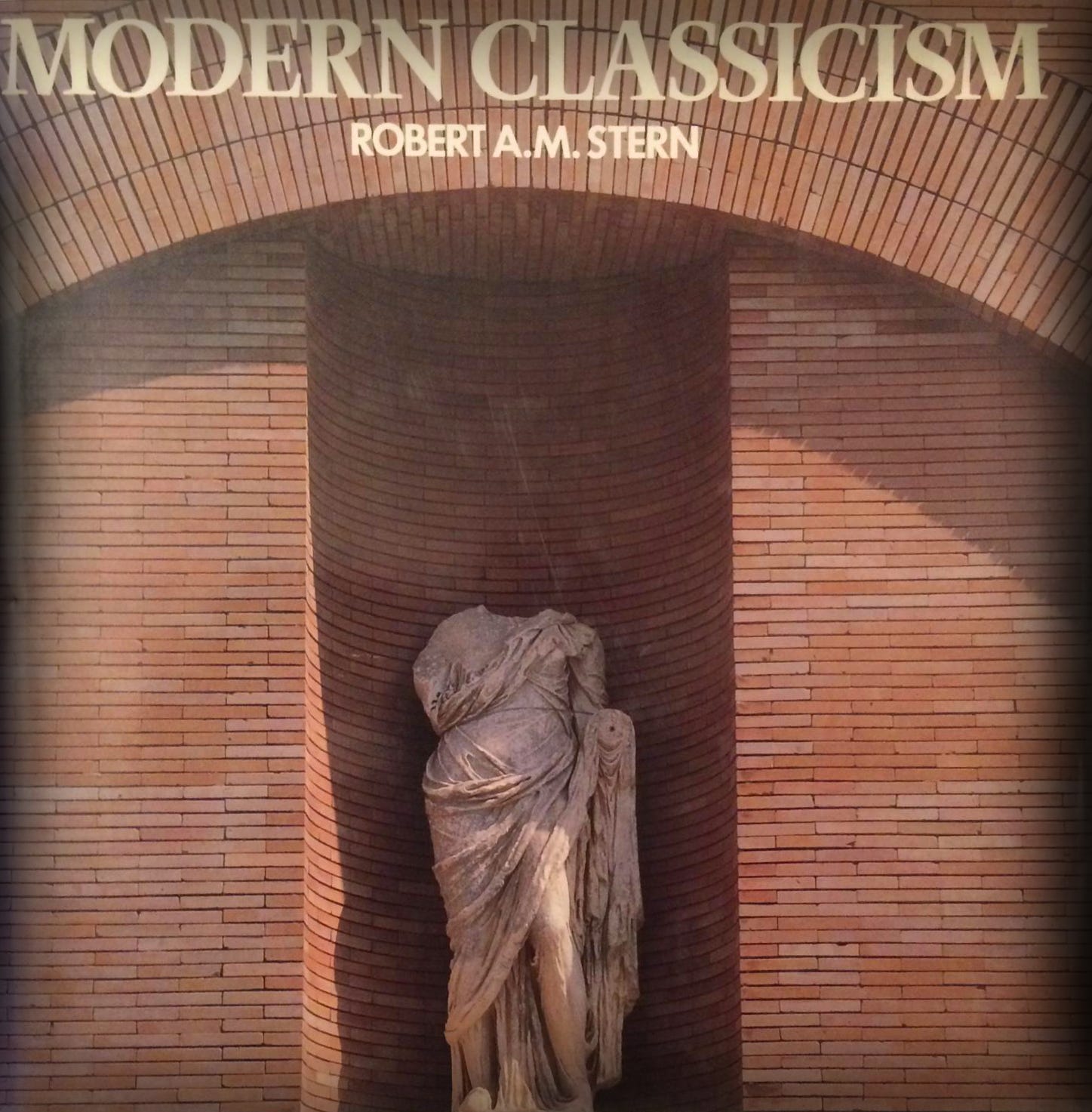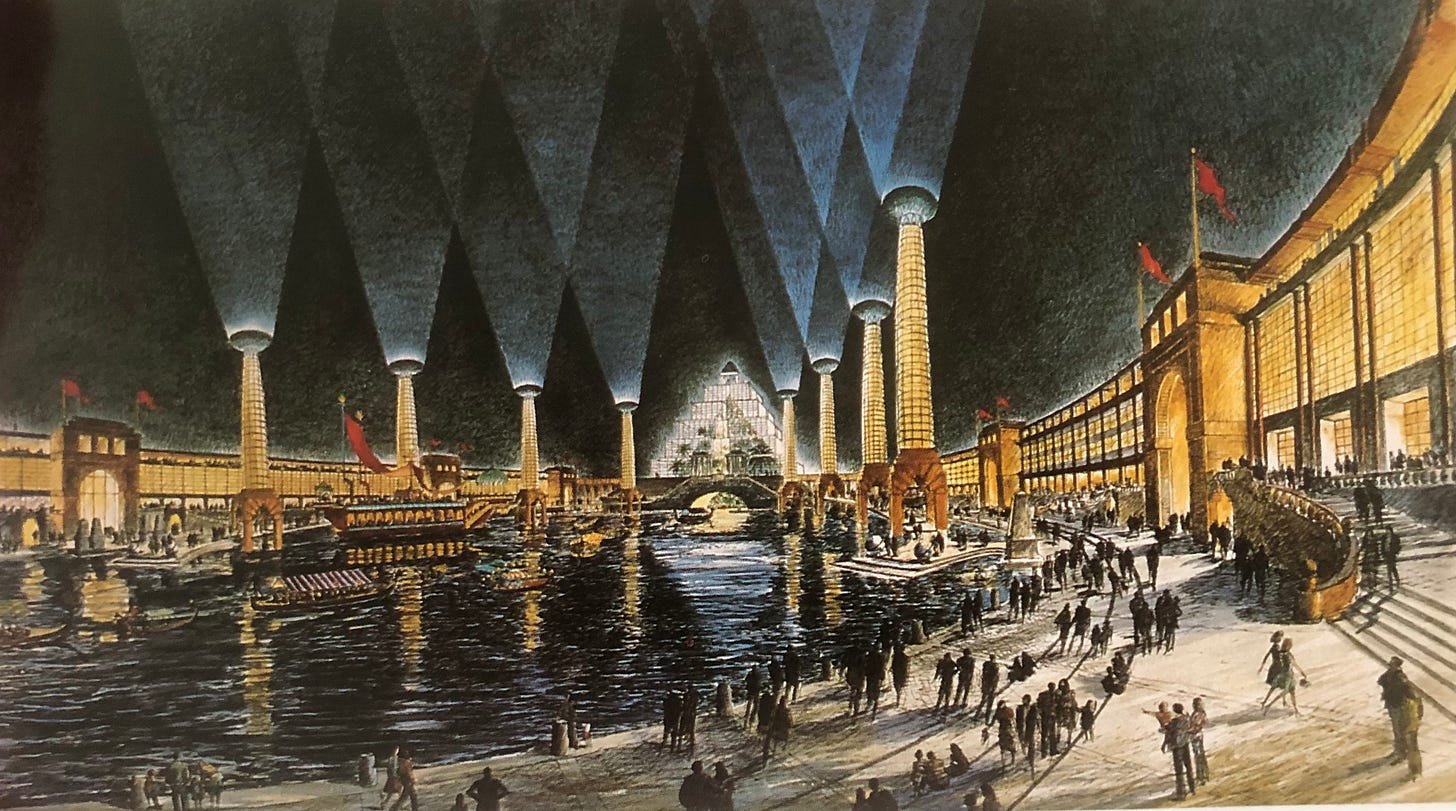The Virginia State Capitol rendered in an 1830 watercolor by William Goodacre.
Thomas Jefferson’s Virginia State Capitol
[click to read]
In 1784 Thomas Jefferson found himself in France as our first ambassador. While he was there he fell in love. Arrested by its striking classical beauty, the patriot became smitten with a small Roman temple in Nîmes known as the Maison Carrée (square house). Describing it as “the most perfect model existing of what might be called cubic architecture,” Jefferson sketched a design for the Capitol of Virginia, to be built in Richmond. “Very simple, noble beyond expression,” he continued in praise of the original, as he and French architect Charles-Louis Clérisseau collaborated on their new design. Completed in 1788, it was, according to architectural historian George Heard Hamilton, “the first building to be so called in modern times, and the first since antiquity specifically intended for republican legislative functions ... the State Capitol in Richmond, Virginia.” (read more)
I’m reading Robert A. M. Stern’s Modern Classicism. In it he talks about how from the time of the Renaissance on, new technologies have influenced design in traditional form. He looks at a number of modern architects who have returned to traditional forms while carrying them out in new technologies and materials.
It is fitting that he begins with Filippo Brunelleschi and the Renaissance and continues through the Beaux Arts period and the Classicism of Thomas Jefferson, as adapted to American culture and materials.
He wraps up with a vision of a Chicago World’s Fair, never realized, that would have happened in 1992, a hundred years after the great ‘White City’ exposition. Sadly, that fair was never carried past the concept stage. Still, Stern and others have built projects that do present a lively dialogue with traditional styles. This book is a wonderful tribute to their work.
Perspective of the Court of Honor, 1992 Chicago World’s Fair (unbuilt) — Skidmore, Owings, and Merrill, Chicago/William E. Brazenly & Associates, with Thomas Beeby, Charles More, Jacquelin Robertson, Robert A. M. Stern, Stanley Tigerman, 1984-5.





